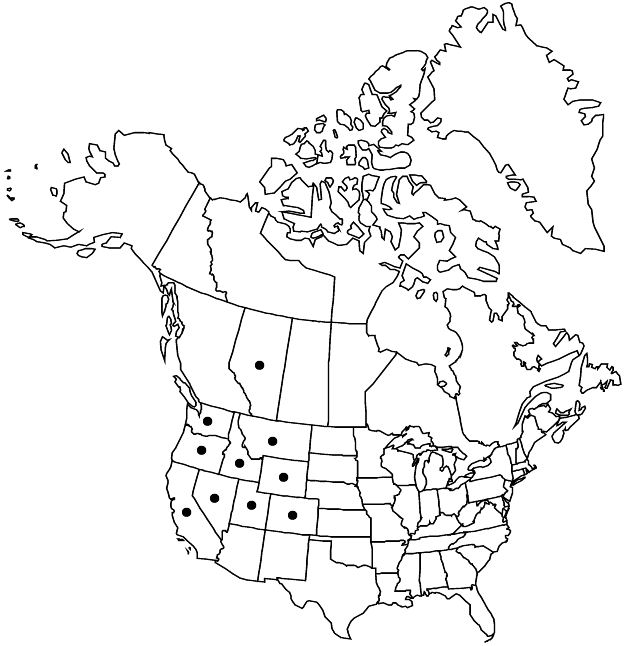Viola praemorsa var. linguifolia
Man. Pl. Oregon, 486. 1941.
Plants 10.5–30 cm. Leaves: basal: petiole 7.2–19.2 cm; blade usually ovate to elliptic, sometimes oblong-lanceolate, 2.7–8.5 × 1.6–3.7 cm, length 1.7–3.4 times width, base attenuate, margins usually crenate, serrate, or serrulate, sometimes entire; cauline similar to basal except: petiole 3.8–11.8 cm; blade 3.3–8 × 1.4–3.5 cm. Peduncles 5–15 cm. Lowest petal 14–15 mm. Capsules 6–12 mm. Seeds brown to red-brown. 2n = 36, 48.
Phenology: Flowering May–Aug.
Habitat: Vernally moist slopes and banks, grassy areas
Elevation: 700–3500 m
Distribution

Alta., Calif., Colo., Idaho, Mont., Nev., Oreg., Utah, Wash., Wyo.
Discussion
The leaves of var. linguifolia are sometimes described as tongue-shaped (M. S. Baker 1957; D. M. Fabijan et al. 1987). Fabijan et al. commented that the distribution of var. linguifolia overlaps with V. bakeri in central California, Oregon, and Washington; with var. flavovirens in Idaho, Washington, and Wyoming; and with V. tomentosa in the Sierra Nevada. She stated that the morphological variants of var. linguifolia observed during her study may be symptomatic of these sympatric distributions, which lead to the possibilities of hybridization and/or introgression. She described the cauline leaves of var. linguifolia as ovate to narrowly ovate. As a possible consequence of hybridization and/or introgression, differences in leaf outline have been observed among plants in the same population. In a population of var. linguifolia in Modoc County, California, some plants had ovate to narrowly ovate leaf blades, as described by Fabijan et al.; leaf blades on other plants in the same population were elliptic.
Viola praemorsa var. altior was treated by M. S. Baker (1957) and D. M. Fabijan et al. (1987) as a synonym of V. praemorsa subsp. linguifolia. Variety altior, described from Montana, is recognized in the Intermountain Flora as occurring in Utah (N. H. Holmgren 2005d). Because the original description of var. altior was meager and no specimens or the type have been examined, it is retained here as a synonym of var. linguifolia pending further study.
M. S. Baker (1957) noted that in comparison with Viola nuttallii, which grows in open, sunny areas, var. linguifolia is usually found in the shade of trees or shrubs.
Variety linguifolia is reported to hybridize with V. utahensis (G. Davidse 1976).
Selected References
None.